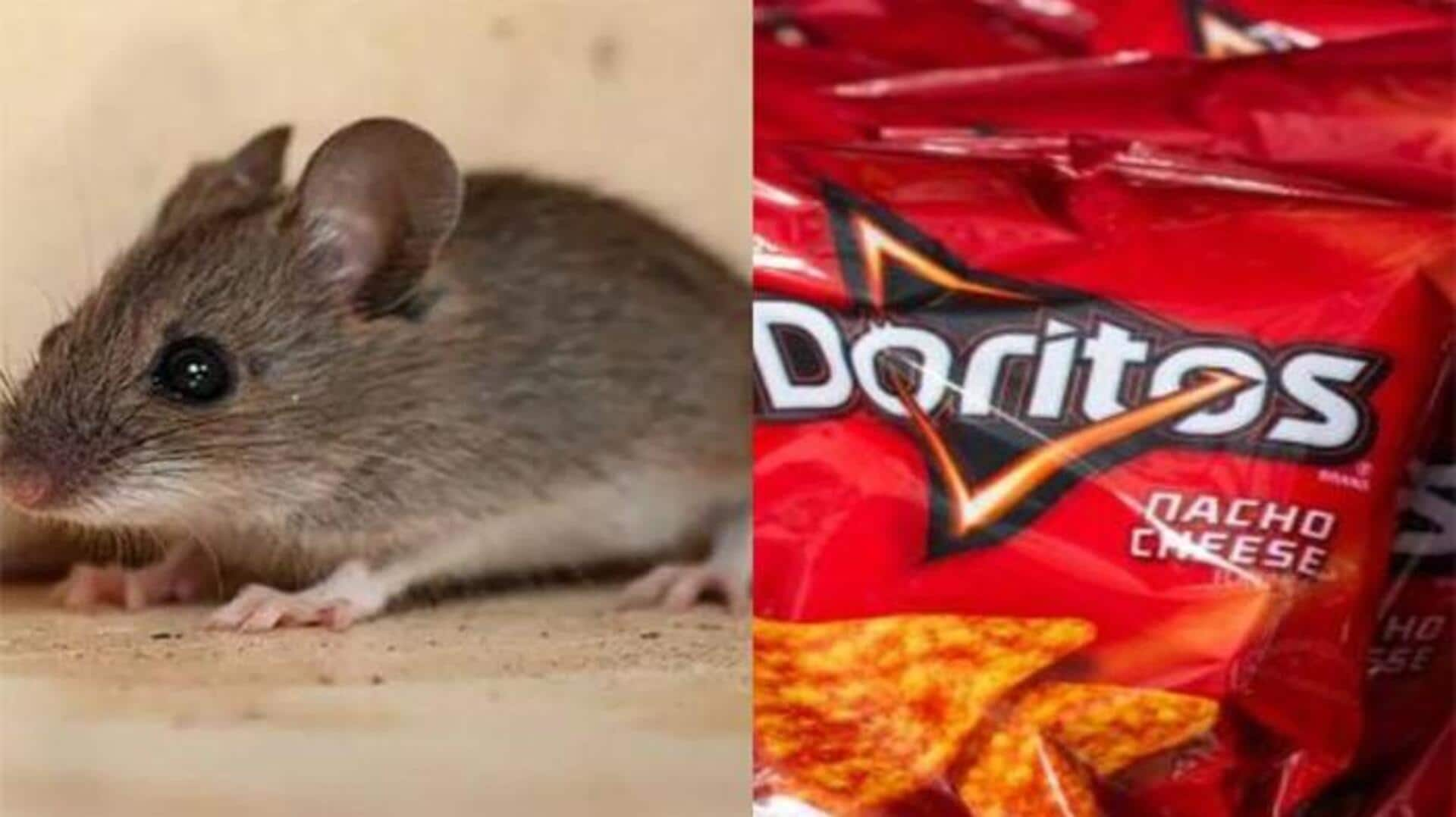
Food dye found in Doritos turns mouse's skin transparent: Study
What's the story
Scientists at Stanford University have made a groundbreaking discovery, using an ingredient found in Doritos chips. The research, titled "Achieving optical transparency in live animals with absorbing molecules," was recently published in the journal Science. The team used FD&C Yellow 5, a common food dye that gives Doritos their distinctive orange color, to render a mouse's skin temporarily transparent. This process allowed them to observe structures such as blood vessels and organs beneath the skin.
Methodology
The process and its implications
The experiment involved applying the dye to the abdomen, scalp, and hindlimb of a sedated mouse. Within five minutes, the skin became a "living window," enabling scientists to see through tissues at structures below. This effect was temporary and got reversed once the dye was washed off. The university stated that this is likely the first non-invasive method for achieving visibility of a mouse's internal organs while they are alive.
Expert opinion
A major breakthrough
Philipp Keller, a biologist at the Howard Hughes Medical Institute's Janelia Research Campus in Ashburn, Virginia, described the discovery as a "major breakthrough." Zihao Ou, the lead author of the study and assistant professor of physics at The University of Texas at Dallas, explained that while it may seem like magic to some, those familiar with fundamental physics would understand this phenomenon. He emphasized that the dye is biocompatible and safe for living organisms.
Process
The science behind the transparency
The technique works by altering how body tissues that are typically opaque interact with light. Tissues appear opaque because the contrast between the refractive indices causes light to scatter. By adding a dye that strongly absorbs light to these tissues, researchers could narrow the gap between components' refractive indices enough to make them transparent. However, Ou cautioned that while the dye can make mouse's skin transparent, it's unlikely to work on humans due to differences in skin thickness.
Future prospects
Potential applications in medical research
Ou highlighted the potential applications of this research in the medical field. He stated, "Our research group is mostly academics, so one of the first things we thought of when we saw the results of our experiments was how this might improve biomedical research." The team plans to continue investigating and experiment with other substances that could outperform FD&C Yellow 5 in achieving tissue transparency.